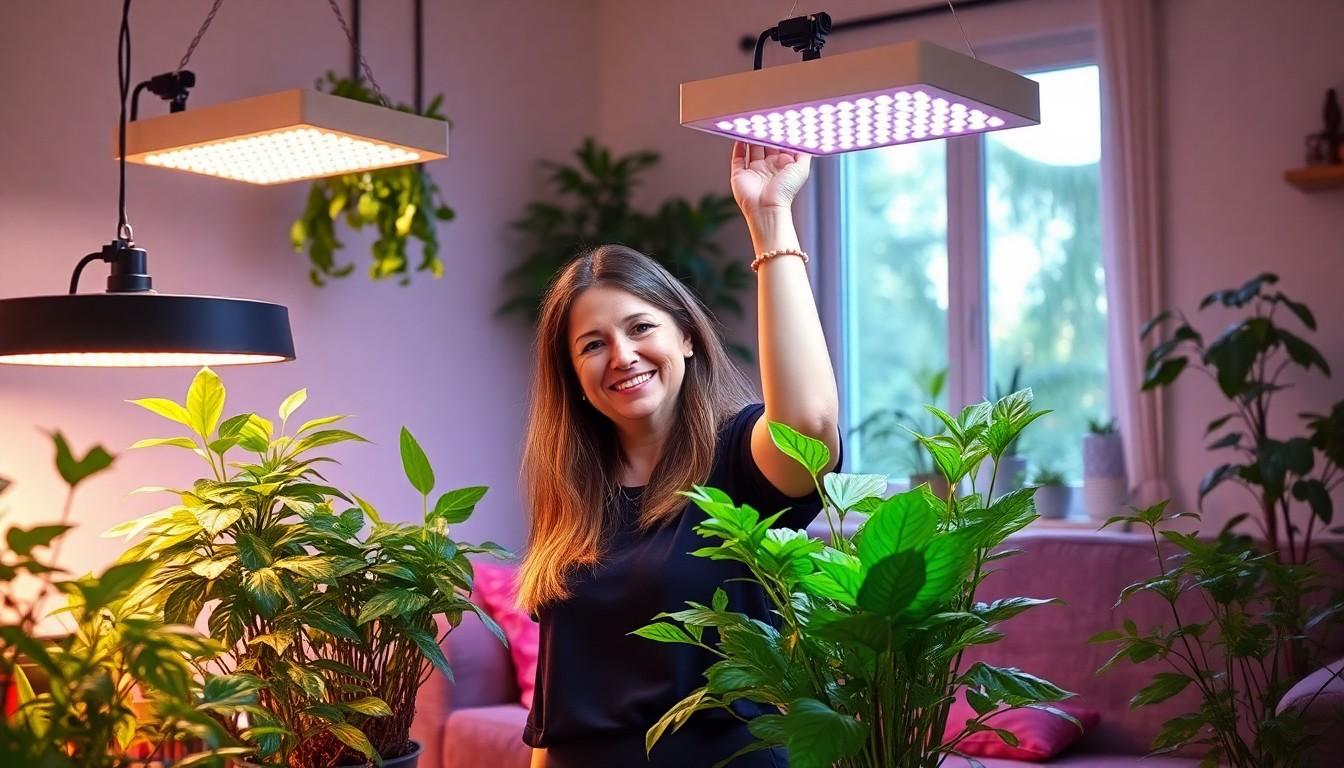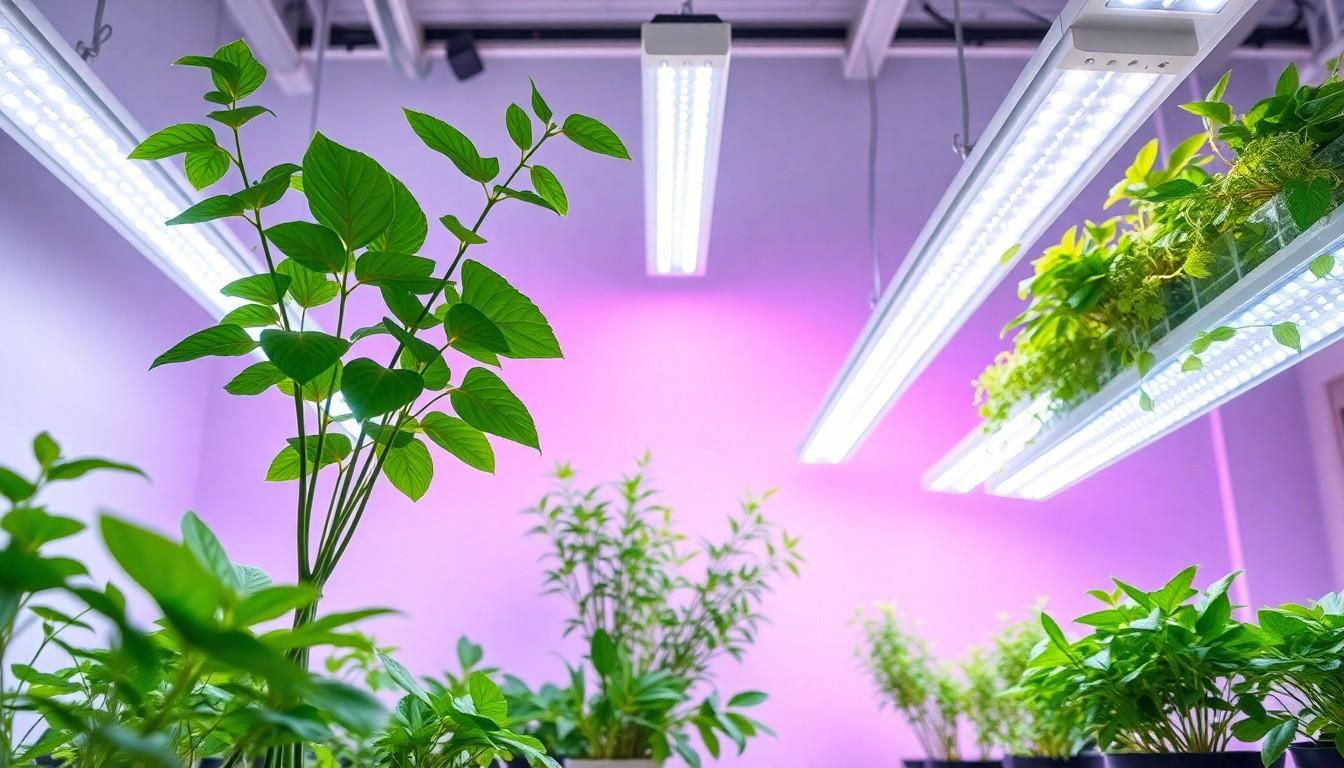Phone:
(701)814-6992
Physical address:
6296 Donnelly Plaza
Ratkeville, Bahamas.

Indoor plants can turn a dull room into a vibrant oasis, but without the right light, they might just be glorified paperweights. If your leafy friends are looking a little more wilted than wonderful, it’s time to shine a spotlight on their needs. The right grow lights can transform a dark corner into a sun-soaked paradise, giving those plants the glow-up they deserve.
Adequate lighting plays a crucial role in the health of indoor plants. Without sufficient light, plants exhibit stunted growth and may develop yellowing leaves. Various types of lighting provide different benefits, making it essential to choose the right option for specific plant types.
Natural light is often the first choice, but it may not be enough in darker spaces. Many indoor plants thrive in bright, indirect light. In such cases, supplemental lighting becomes necessary. Grow lights help mimic natural sunlight, promoting photosynthesis even in low-light environments.
LED lights are among the most popular options due to their energy efficiency and customizable spectrums. High-intensity discharge (HID) lights offer powerful illumination suitable for larger or more light-demanding plants. Fluorescent lights are also effective for small spaces and seedlings, as they produce less heat while providing adequate brightness.
Timing is equally important when selecting indoor plant lighting. Most plants require 12 to 16 hours of light a day, with a dark period for optimal growth. Setting a consistent light schedule fosters stronger plants by simulating seasonal changes.
Placement of lights makes a significant difference in plant health, too. Positioning lights 6 to 12 inches above plants ensures they receive sufficient energy without excessive heat. Rotating plants occasionally helps achieve balanced growth by allowing all sides to receive equal light exposure.
Selecting the right light depends on plant species and interior conditions. Understanding these factors allows for enhanced growth and a more vibrant indoor garden.

Various lighting options cater to indoor plants’ needs. Each type serves specific requirements for optimal growth.
LED grow lights rank as one of the most energy-efficient solutions. They emit low heat, allowing plants to stay closer without risk of damage. With a broad spectrum, these lights support all growth stages, from seedlings to mature plants. Lifespans often exceed 50,000 hours, ensuring lasting use. Adjustability in brightness and colors enhances versatility for various plant types.
Fluorescent lights excel in smaller growing spaces, providing effective coverage for seedlings and low-light plants. These lights offer a softer glow, helping to prevent heat damage while ensuring adequate light for photosynthesis. Commonly available in tubes and compact versions, they suit different setups. A lifespan of around 10,000 hours makes them a reliable choice. Regular bulb replacement may be necessary to maintain brightness.
Incandescent lights, while traditionally used for home lighting, are less efficient for plant growth. They produce a lot of heat, which can harm plants if placed too close. Short lifespans of around 1,000 hours reduce their practicality compared to other options. Limited light spectrum impacts growth, making them suitable primarily for temporary lighting needs. These lights may still find a niche role for ornamental plants requiring minimal light.
Selecting the appropriate lighting for indoor plants requires careful consideration of various factors. Understanding these elements can significantly influence plant health and growth.
Light intensity directly affects photosynthesis rates in plants. Higher light intensity promotes faster growth and more robust foliage. Conversely, low light intensity can lead to poor growth and leggy plants that reach for light. It’s essential to match the light intensity with the specific requirements of each plant species. For example, succulents thrive in bright light, while ferns prefer lower intensity. Using a lux meter can help assess light levels and ensure they align with the needs of plants.
The spectrum of light also plays a critical role in plant development. Plants utilize different wavelengths of light for various growth processes. Blue light encourages vegetative growth, while red light is vital for flowering and fruiting. Grow lights that offer a full spectrum mimic natural sunlight, supporting diverse plant types throughout their growth stages. Checking the light spectrum is crucial when choosing grow lights. Spectral composition should cater to the unique needs of plants, enhancing overall health and vitality.
Energy efficiency is another vital factor to consider. Efficient lights save electricity, which contributes to lower energy bills. LED grow lights stand out for their high efficiency, consuming significantly less energy while producing adequate light. Fluorescent lights also offer a balance between efficiency and performance, ideal for small spaces. Opting for energy-efficient lighting reduces environmental impact while providing plants with the necessary illumination for growth. Prioritizing energy-efficient options ensures sustainability in an indoor gardening setup.
Effective lighting choices enhance the growth conditions for indoor plants. Here are some top recommendations.
LED grow lights stand out as the most energy-efficient option for indoor gardening. They emit low heat and cover all growth stages effectively. An example is the Viparspectra 300W model, boasting a lifespan exceeding 50,000 hours. This light offers a full spectrum, promoting both vegetative and flowering stages. The adjustable features allow for flexible positioning, optimizing light exposure. With their combination of efficiency and functionality, LED grow lights make an excellent choice for various indoor plants.
For smaller spaces or seedlings, fluorescent lights serve as a reliable option. The Agrobrite T5 fluorescent light is a popular choice among indoor gardeners. It emits a balanced spectrum, ideal for both growth and development in low-light conditions. This model lasts around 10,000 hours, providing consistent performance. Additionally, its slim design fits well in tight areas, ensuring versatile placement. Utilizing fluorescent lights can effectively support the growth of seedlings and low-light plants.
Choosing the right lighting for indoor plants is essential for their health and growth. By understanding the specific needs of each plant and the available lighting options, it’s possible to create a thriving indoor garden. LED grow lights stand out for their efficiency and longevity, making them a top choice for many plant enthusiasts.
Fluorescent lights also provide effective solutions for smaller spaces and seedlings. Proper placement and timing of these lights can further enhance plant vitality. Investing in the right lighting not only improves the aesthetics of indoor spaces but also ensures that plants flourish, bringing life and color to any environment.